Driss Benhaddou
M18K: A Comprehensive RGB-D Dataset and Benchmark for Mushroom Detection and Instance Segmentation
Jul 15, 2024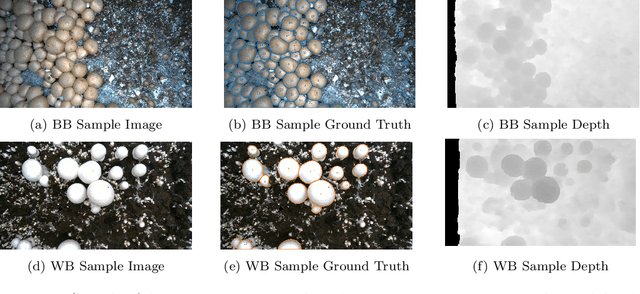
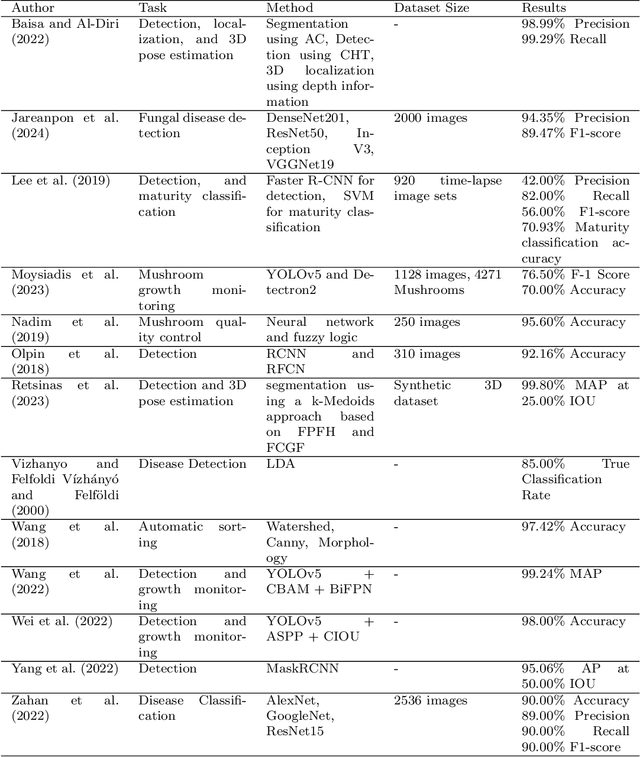
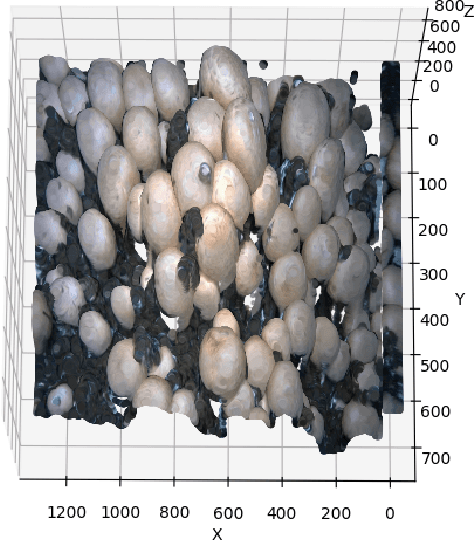
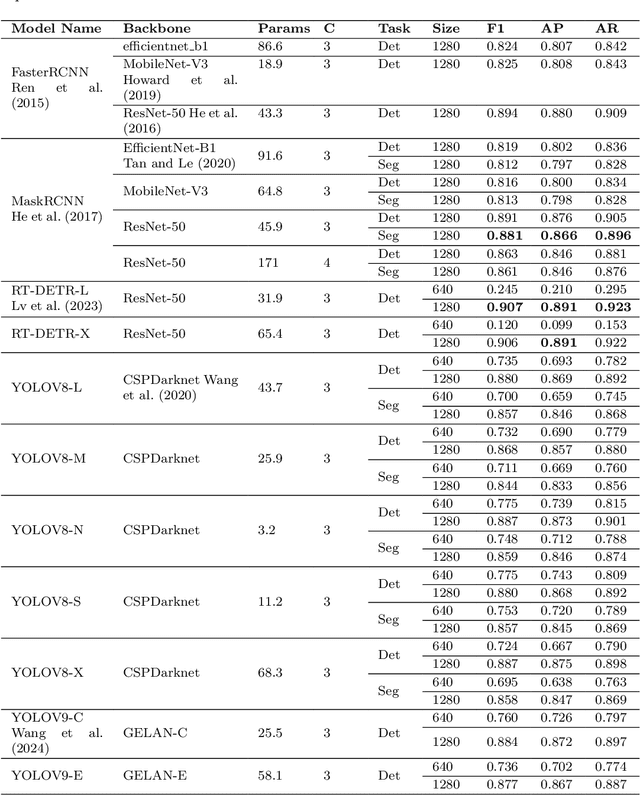
Abstract:Automating agricultural processes holds significant promise for enhancing efficiency and sustainability in various farming practices. This paper contributes to the automation of agricultural processes by providing a dedicated mushroom detection dataset related to automated harvesting, growth monitoring, and quality control of the button mushroom produced using Agaricus Bisporus fungus. With over 18,000 mushroom instances in 423 RGB-D image pairs taken with an Intel RealSense D405 camera, it fills the gap in mushroom-specific datasets and serves as a benchmark for detection and instance segmentation algorithms in smart mushroom agriculture. The dataset, featuring realistic growth environment scenarios with comprehensive annotations, is assessed using advanced detection and instance segmentation algorithms. The paper details the dataset's characteristics, evaluates algorithmic performance, and for broader applicability, we have made all resources publicly available including images, codes, and trained models via our GitHub repository https://github.com/abdollahzakeri/m18k
Intelligent Building Control Systems for Thermal Comfort and Energy-Efficiency: A Systematic Review of Artificial Intelligence-Assisted Techniques
Apr 06, 2021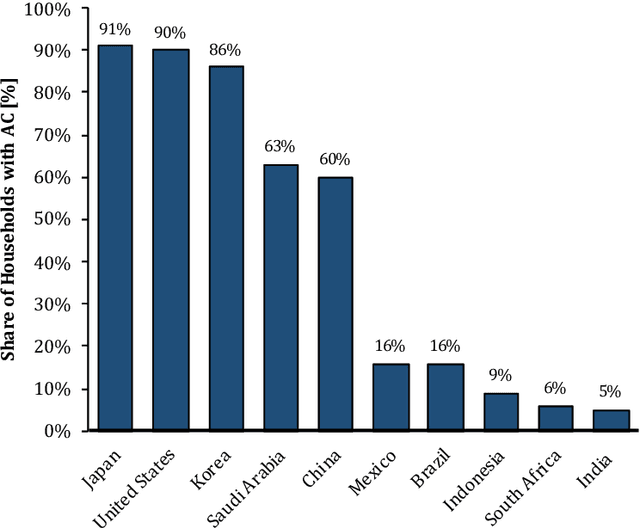

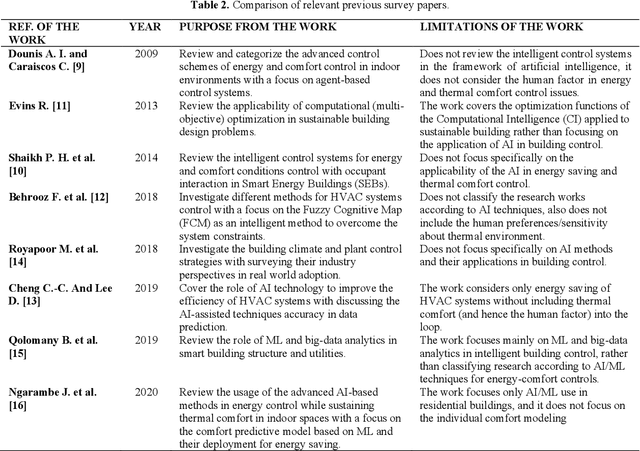
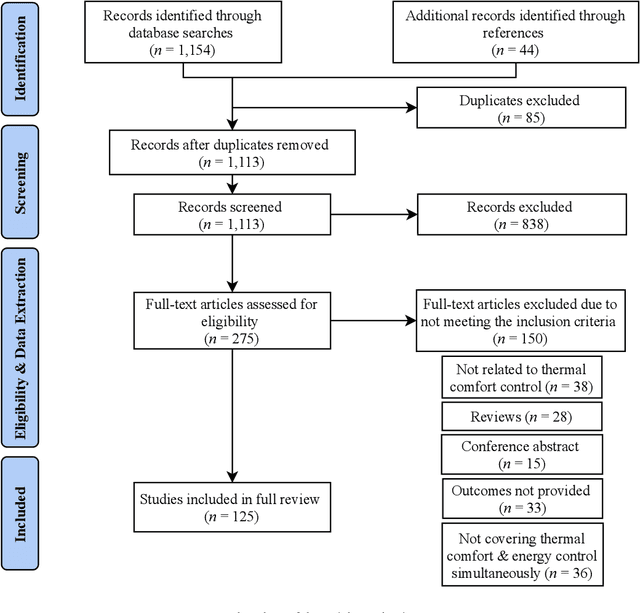
Abstract:Building operations represent a significant percentage of the total primary energy consumed in most countries due to the proliferation of Heating, Ventilation and Air-Conditioning (HVAC) installations in response to the growing demand for improved thermal comfort. Reducing the associated energy consumption while maintaining comfortable conditions in buildings are conflicting objectives and represent a typical optimization problem that requires intelligent system design. Over the last decade, different methodologies based on the Artificial Intelligence (AI) techniques have been deployed to find the sweet spot between energy use in HVAC systems and suitable indoor comfort levels to the occupants. This paper performs a comprehensive and an in-depth systematic review of AI-based techniques used for building control systems by assessing the outputs of these techniques, and their implementations in the reviewed works, as well as investigating their abilities to improve the energy-efficiency, while maintaining thermal comfort conditions. This enables a holistic view of (1) the complexities of delivering thermal comfort to users inside buildings in an energy-efficient way, and (2) the associated bibliographic material to assist researchers and experts in the field in tackling such a challenge. Among the 20 AI tools developed for both energy consumption and comfort control, functions such as identification and recognition patterns, optimization, predictive control. Based on the findings of this work, the application of AI technology in building control is a promising area of research and still an ongoing, i.e., the performance of AI-based control is not yet completely satisfactory. This is mainly due in part to the fact that these algorithms usually need a large amount of high-quality real-world data, which is lacking in the building or, more precisely, the energy sector.
Artificial Intelligence-Assisted Energy and Thermal Comfort Control for Sustainable Buildings: An Extended Representation of the Systematic Review
Jun 22, 2020Abstract:Discussion of the environmental impact of buildings has been gaining weight in the agendas of a number of cities and countries around the world. Indeed, approximately 38% of the final energy consumption growth between 2015 and 2050 in the world is correlated to the use and occupation of buildings. In this regard, the building sector was identified as a leading contributor to global production of CO2 in the fifth report produced by the International Panel of Climate Change (IPCC). However, the same report also has identified this sector as the one with the greatest potential for reducing CO2 emissions through design opportunities, technological advances, and user behavior. Nowadays, research has been directed towards more advanced control structures that take multiple inputs (temperature, humidity, comfort sensation, etc.) and uses artificial intelligence (AI) techniques for heating, ventilation, and air-conditioning (HVAC) control, design, management, optimization, and maintenance. This paper performs a systematic review in order to investigate the use of AI-based tools for improving the performance of energy control systems and enhance thermal comfort. This enables a holistic understanding of (1) the challenges of providing thermal comfort to the users inside buildings in an energy efficient way, and (2) the related bibliographic material to help researchers and professionals in the area undertaking such a challenge. Compared to existing reviews, this paper extends the state of the art by reviewing and categorizing all existing publications and providing the material related to the AI-assisted tools for building environment control while considering a dynamic interaction within comfort-subject-energy control loop.
Leveraging Machine Learning and Big Data for Smart Buildings: A Comprehensive Survey
May 19, 2019



Abstract:Future buildings will offer new convenience, comfort, and efficiency possibilities to their residents. Changes will occur to the way people live as technology involves into people's lives and information processing is fully integrated into their daily living activities and objects. The future expectation of smart buildings includes making the residents' experience as easy and comfortable as possible. The massive streaming data generated and captured by smart building appliances and devices contains valuable information that needs to be mined to facilitate timely actions and better decision making. Machine learning and big data analytics will undoubtedly play a critical role to enable the delivery of such smart services. In this paper, we survey the area of smart building with a special focus on the role of techniques from machine learning and big data analytics. This survey also reviews the current trends and challenges faced in the development of smart building services.
Role of Deep LSTM Neural Networks And WiFi Networks in Support of Occupancy Prediction in Smart Buildings
Nov 28, 2017



Abstract:Knowing how many people occupy a building, and where they are located, is a key component of smart building services. Commercial, industrial and residential buildings often incorporate systems used to determine occupancy. However, relatively simple sensor technology and control algorithms limit the effectiveness of smart building services. In this paper we propose to replace sensor technology with time series models that can predict the number of occupants at a given location and time. We use Wi-Fi data sets readily available in abundance for smart building services and train Auto Regression Integrating Moving Average (ARIMA) models and Long Short-Term Memory (LSTM) time series models. As a use case scenario of smart building services, these models allow forecasting of the number of people at a given time and location in 15, 30 and 60 minutes time intervals at building as well as Access Point (AP) level. For LSTM, we build our models in two ways: a separate model for every time scale, and a combined model for the three time scales. Our experiments show that LSTM combined model reduced the computational resources with respect to the number of neurons by 74.48 % for the AP level, and by 67.13 % for the building level. Further, the root mean square error (RMSE) was reduced by 88.2% - 93.4% for LSTM in comparison to ARIMA for the building levels models and by 80.9% - 87% for the AP level models.
Parameters Optimization of Deep Learning Models using Particle Swarm Optimization
Nov 28, 2017



Abstract:Deep learning has been successfully applied in several fields such as machine translation, manufacturing, and pattern recognition. However, successful application of deep learning depends upon appropriately setting its parameters to achieve high quality results. The number of hidden layers and the number of neurons in each layer of a deep machine learning network are two key parameters, which have main influence on the performance of the algorithm. Manual parameter setting and grid search approaches somewhat ease the users tasks in setting these important parameters. Nonetheless, these two techniques can be very time consuming. In this paper, we show that the Particle swarm optimization (PSO) technique holds great potential to optimize parameter settings and thus saves valuable computational resources during the tuning process of deep learning models. Specifically, we use a dataset collected from a Wi-Fi campus network to train deep learning models to predict the number of occupants and their locations. Our preliminary experiments indicate that PSO provides an efficient approach for tuning the optimal number of hidden layers and the number of neurons in each layer of the deep learning algorithm when compared to the grid search method. Our experiments illustrate that the exploration process of the landscape of configurations to find the optimal parameters is decreased by 77%-85%. In fact, the PSO yields even better accuracy results.
 Add to Chrome
Add to Chrome Add to Firefox
Add to Firefox Add to Edge
Add to Edge